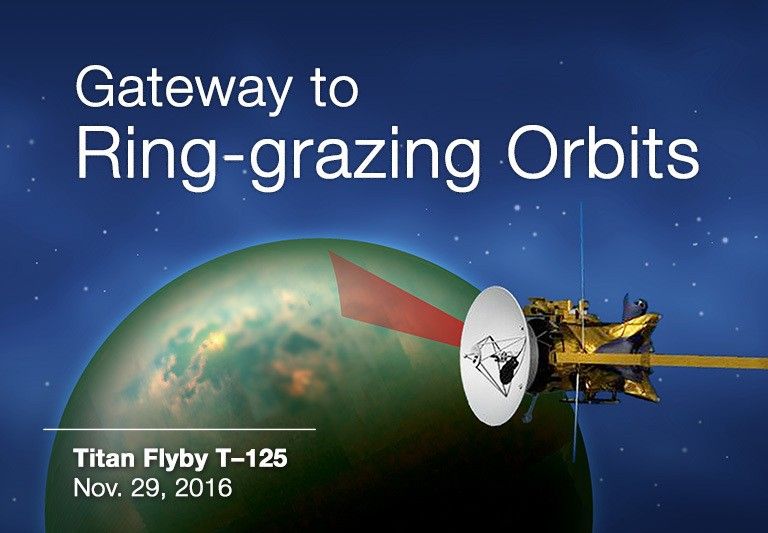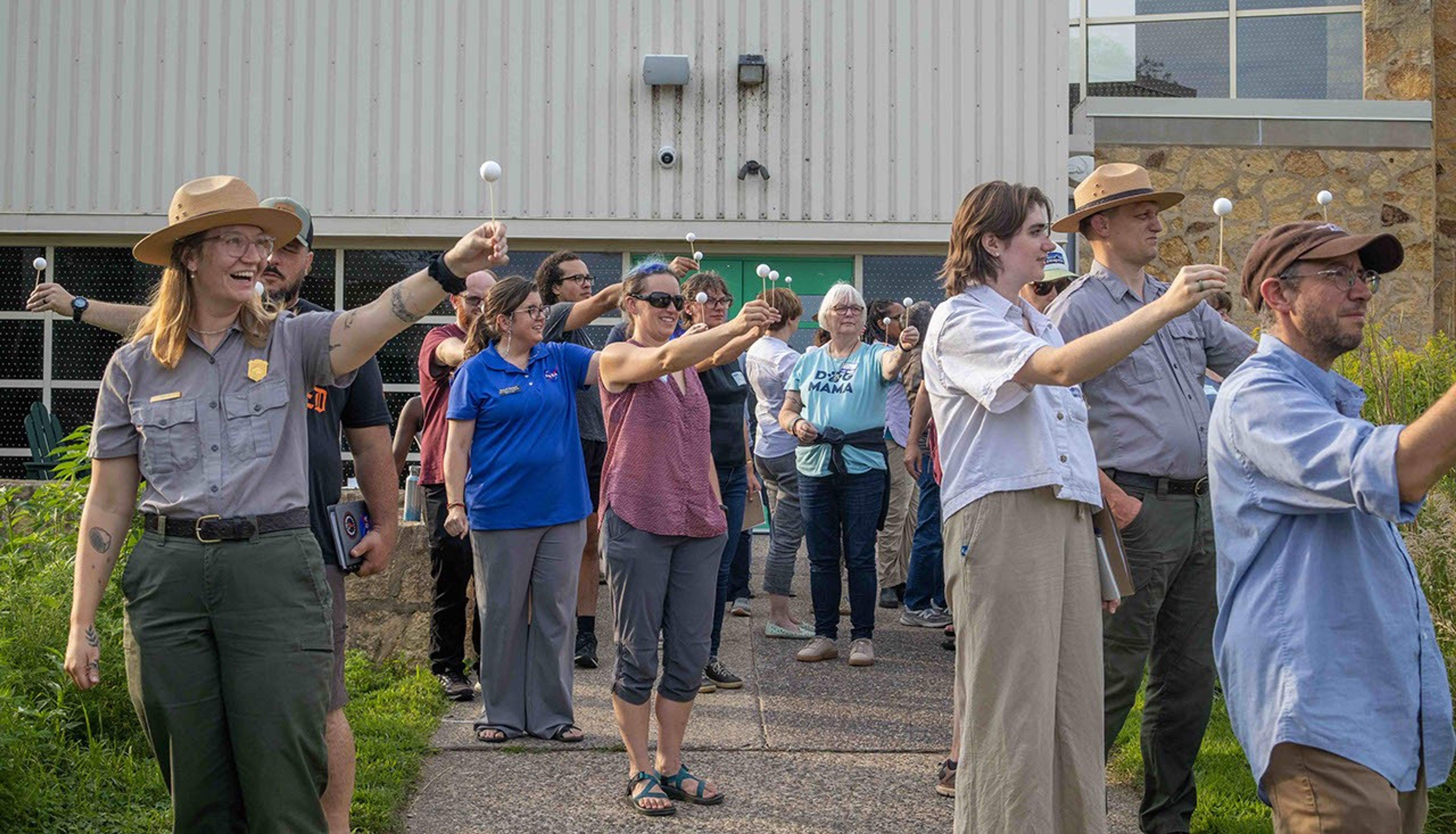Cassini has just one more close flyby of Saturn’s largest moon Titan after this one. On T-125, two of the spacecraft’s spectrometers will perform up-close mapping of the moon’s surface and surface temperatures.
Flyby T-125 has two primary goals: Mapmaking of Titan’s surface, and changing Cassini’s orbit to begin what is perhaps the boldest and most thrilling segment of Cassini’s nearly 20-year mission.
Cassini’s Visible and Infrared Spectrometer (VIMS) will collect images of the moon’s Xanadu, Hotei Arcus and Menrva regions. When the spacecraft is nearest Titan, the VIMS instrument will produce a high-resolution map of Titan’s north pole. Scientists will compare the north pole images to those from previous flybys to see if any features have changed around Titan’s liquid-methane seas and lakes.
About midway through the flyby, Cassini’s Composite Infrared Spectrometer (CIRS) will take over as the primary instrument. For the last time in the mission, CIRS will produce a temperature map of Titan’s surface. CIRS will also look along Titan’s horizon at far-infrared wavelengths to study the atmosphere’s layers. The CIRS instrument measures the temperatures of gases by observing them from a distance, helping scientists determine the atmosphere’s composition as well as how the gases and temperatures are layered vertically. This is the last time CIRS will do so at Titan for the remainder of the mission.
Though CIRS will be the primary instrument for the later part of the flyby, VIMS will still be observing as well, trying to capture sunlight glinting off Titan’s lakes and seas.
The flyby includes not only scientific objectives, but also a navigational one. Cassini uses Titan’s gravity during T-125 to put the spacecraft into its history-making ring-grazing orbits. The spacecraft will be in an elliptical (egg-shaped) orbit inclined about 60 degrees from Saturn’s ring plane. On each orbit, Cassini will swoop down through the ring plane just 6,800 miles (about 11,000 kilometers) outside Saturn’s F ring.
Cassini’s first ring graze is on Dec. 4, and the spacecraft will repeat the feat 20 times, with only about a week between each pass. Those orbits end with the spacecraft’s final close Titan flyby, T-126 in April, at which point Cassini enters its Grand Finale.


































